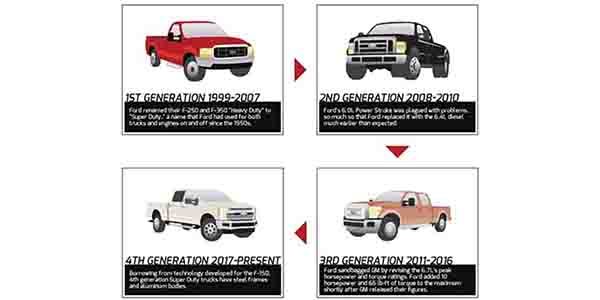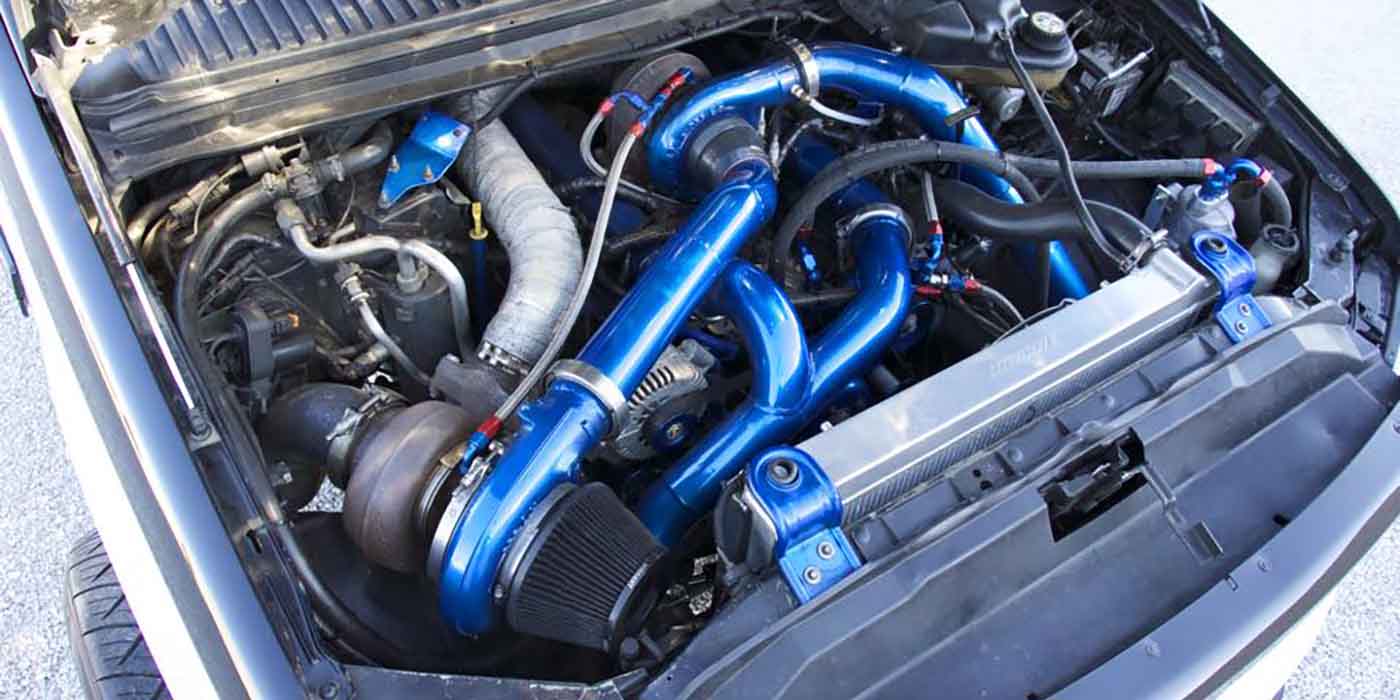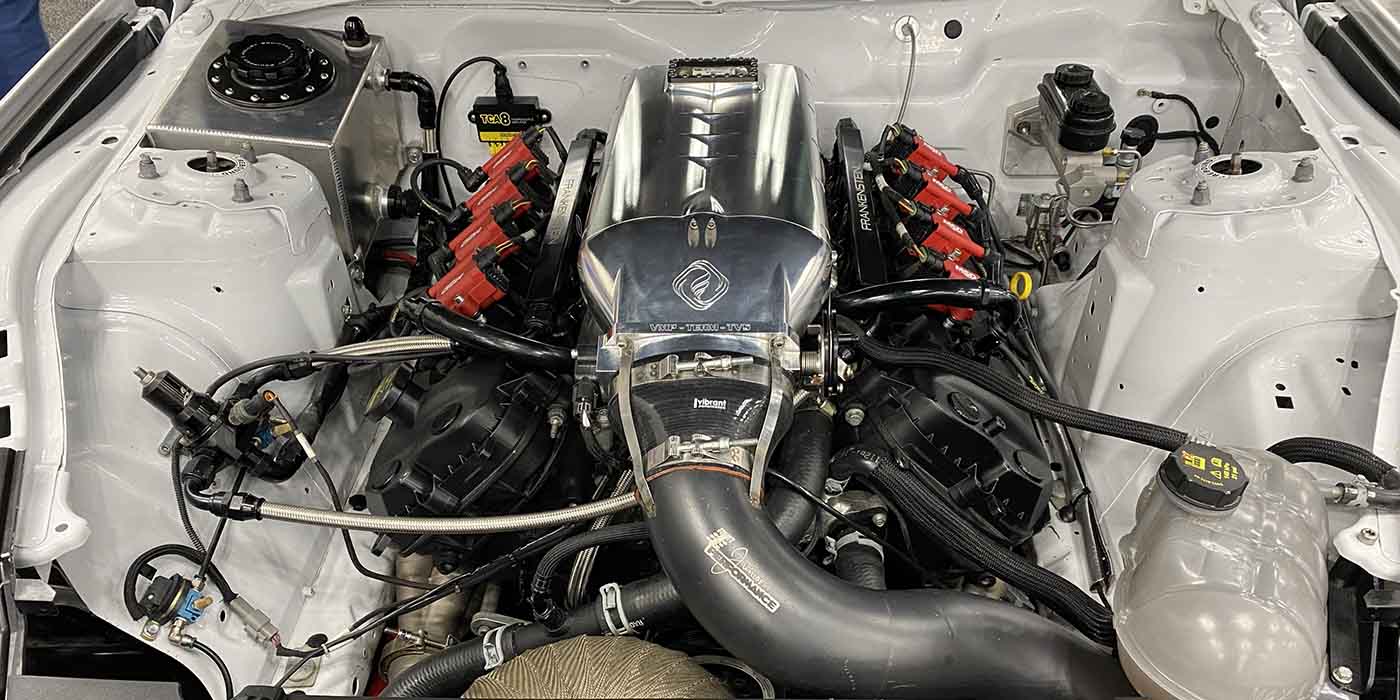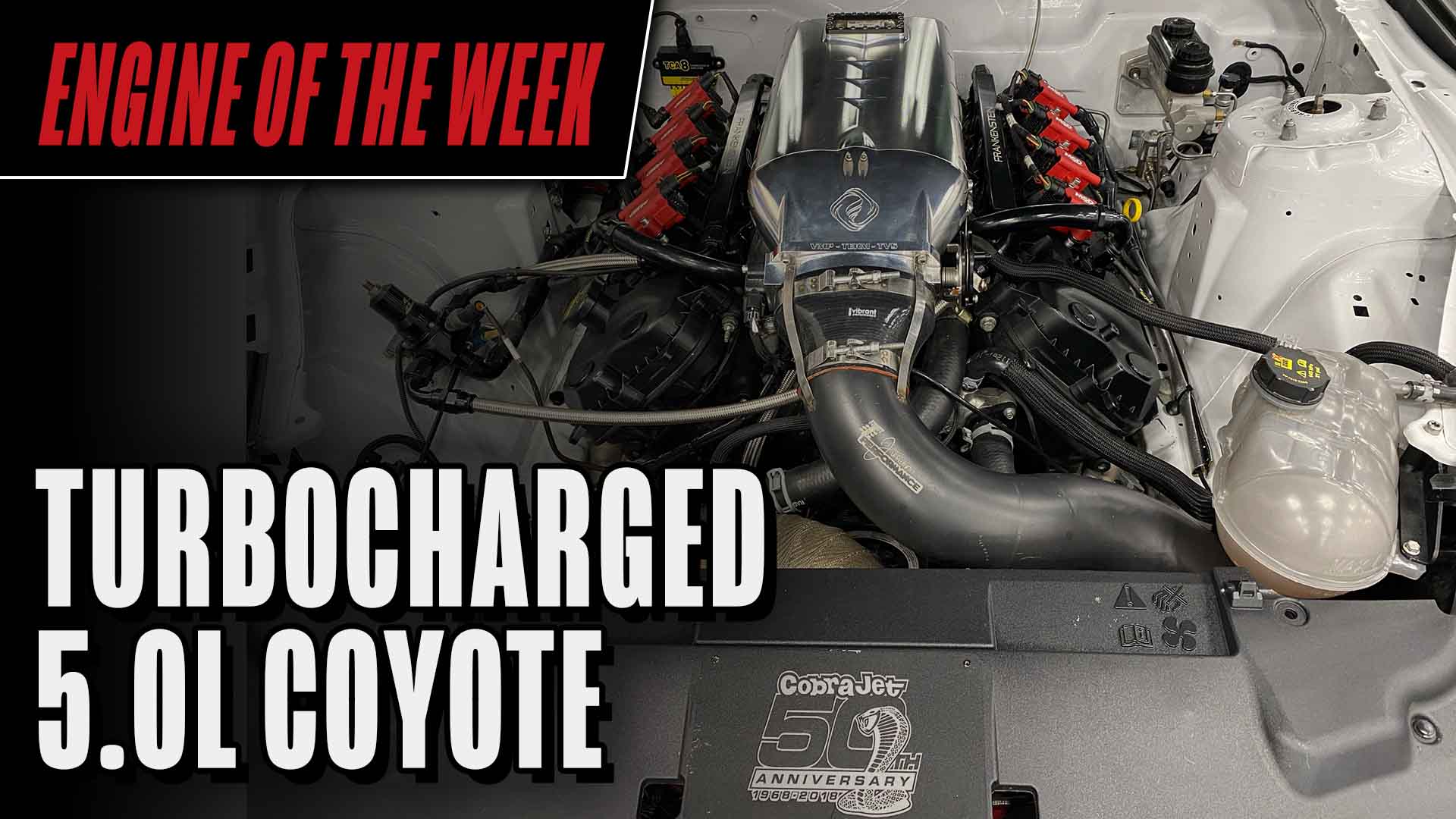A new infographic tracks the horsepower and torque of Ford Super Duty Power Stroke diesel engines over four generations, showing a dramatic increase in power levels since 1999. Ford’s line of hardworking trucks always required more horsepower and torque to tow, haul, rock crawl and race. Ever since Ford eliminated the “Heavy-Duty” moniker and introduced the Super Duty trucks, the Power Stroke engines have been redesigned and re-engineered to deliver performance and meet emissions requirements. The chart illustrates the diesel engine’s ongoing power gains.
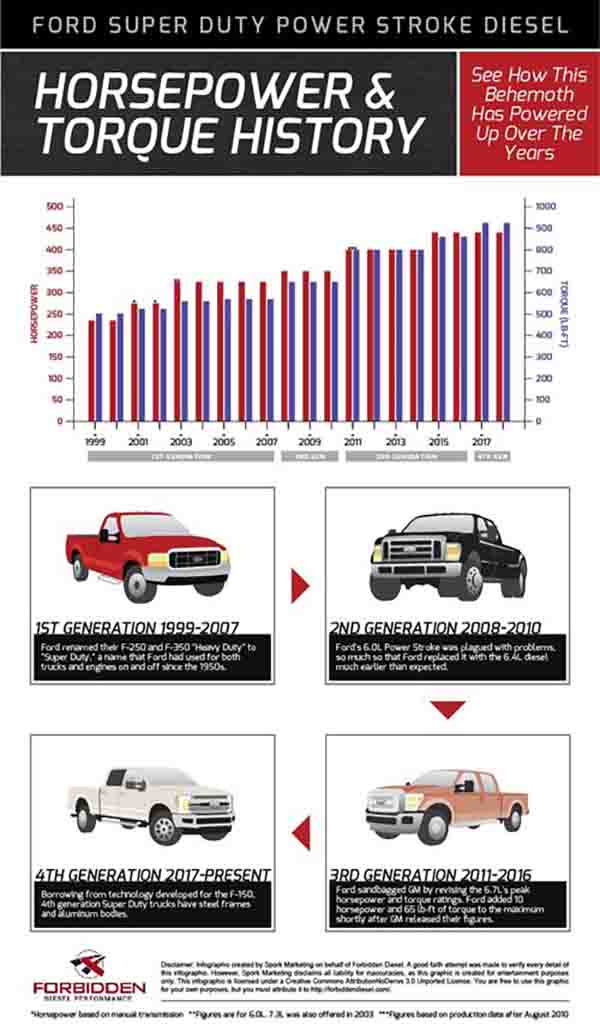
“Last year marked Ford’s 100th anniversary of building trucks,” says Shane Marler, director at Forbidden Diesel Performance. “We think the Power Stroke is one of Ford’s greatest achievements, so we wanted to illustrate the performance gains it’s seen over the past 19 years.”
Ford’s Heavy-Duty line of trucks, the F-250, F-350, ¾ ton, 1 ton, and dually models, received a name change and other updates at the end of the 20th century. The graphic follows the Power Stroke engine’s evolution from the introduction of the 1999 Super Duty trucks through the 2017 models.
Here’s some highlights from the years represented in the infographic:
- The 1999 Super Duty trucks were introduced in 1998 and featured an updated diesel engine, the second generation 7.3L Power Stroke. This version had an electronic fuel pump, increased injection pressure and larger injectors. The HEUI fuel system on this engine required a low-pressure and a high-pressure oil pump and an intercooler. The 1999 models are the only ones with a “Power Stroke V8” badge displayed in front of the truck’s front fender. The engine produced 235 horsepower and 500 lb-ft of torque.
- For the 2001 model year, Ford made a calibration change to the 7.3L engine that boosted the manual transmission Super Duty trucks to 275 hp @ 2800 rpm and 525 lb.-ft. @1600 rpm. The automatic transmission gains were smaller at 250 hp @2800 rpm and 505 lb.-ft. @1600 rpm. Of course, the automatic transmission drivetrains always had slightly less horsepower and torque until the TorqShift® was introduced. Ford stopped selling the 7.3L Power Stroke in 2004, 10 years after its introduction.
- The 6.0L Power Stroke introduced in 2003 was quieter and produced fewer emissions than the 7.3L it replaced. However, the 6.0L experienced a variety of high-profile problems between 2003 and 2005, from injector failures to oil cooler and head gasket problems.
- Ford tweaked the 2005 version of the 6.0L, increasing torque to 570 lb.-ft. @2000 rpm. There was no gain in horsepower from the previous year, and these specs remained the same through 2007, when the engine was replaced ahead of schedule.
- A new 6.4L Power Stroke diesel arrived in 2008, which was the first Power Stroke to include a diesel particulate filter (DPF). Quieter than the 6.0L it replaced, the 6.7L featured twin BorgWarner compound turbochargers that boosted both horsepower and torque. The 2008 6.4L had 25 more horses and 80 more pound-feet of torque.
- The 2011 Power Stroke 6.7L was the first diesel Ford designed entirely in-house. Built from graphite iron, it weighed less than the previous model and had only one turbocharger. The engine was introduced with 390 hp @2800 rpm and 735 lb.-ft. @1600 rpm. When the new GM Duramax diesel arrived with 7 more horses and 30 lb.-ft. more torque a few weeks later, Ford announced that the 2011 Power Stroke actually was rated at 400 hp and 800 lb.-ft. of torque. Effectively, Ford sandbagged GM on the 6.7L’s power ratings.
- In 2017, the 6.7L Power Stroke saw a jump in torque rating to 925 lb.-ft. @1600 rpm. This coincided with the launch of the 4th generation Super Duty, which had a same steel and aluminum structure similar to the recently redesigned F-150.
Over 18 years, Ford’s Super Duty Power Stroke engines went from producing 235 horsepower and 500 lb.-ft. of torque to 400 horsepower and 925 lb.-ft. of torque. Few engines have seen such a rapid increase in power output.

